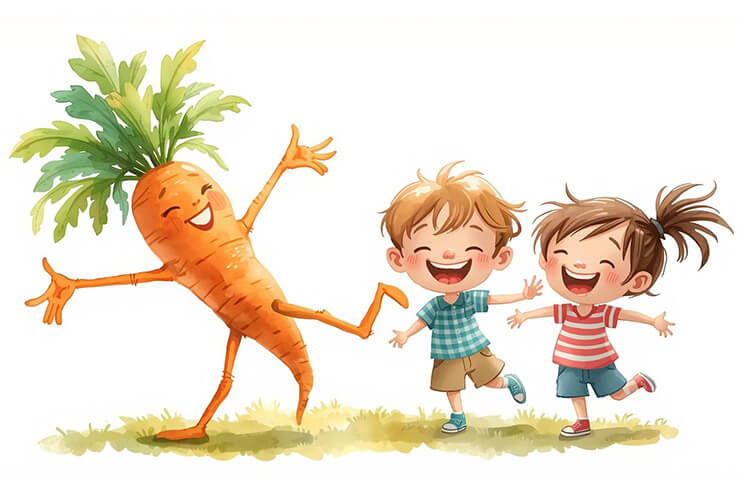Read by Matilda Longbottom

It has always been a mystery to me: how do farmers manage to grow carrots that are perfectly straight, single-rooted, and almost uniform in shape and size, when carrots, given the choice, would much rather do something else?
Left to their own devices, they would waggle and blob, stubby themselves into doubles, or sprout arms and legs like tiny mandrakes. They’d rather tangle and twist, making themselves difficult to harvest and even trickier to peel. It wasn’t their idea to be farmed, after all. If they had their way, they’d stay hidden in the soil, dancing an unseen, rebellious waltz beneath the earth.
My sister, newly settled in a quaint countryside cottage, decided to take up gardening. Brimming with enthusiasm and armed with all the horticultural wisdom gleaned from a few online articles, she set out to grow her own carrots.
She broke up a neglected patch of lawn, tilled the soil as best she could, and lovingly planted the seedlings she had started on her sunny front porch. The birds feasted. The slugs joined in. But against all odds, the delicate, feathery leafage persisted. Every weekend, she battled weeds and pests, tending to her little plot with hopeful determination.
By late Summer, her patience bore fruit—or rather, vegetables. As a doting aunt, she saved the best of her harvest for my two little sons.
They were ecstatic. “Mister Carrot dancing!” they squealed, holding up a particularly animated specimen. It stood with twisted limbs outstretched, its wild, punky fronds flaring like a tiny vegetable rock star. Inspired, the boys tried to mimic its pose, giggling as they struck dramatic carrot-like stances.
Someone must have taken a picture before it shriveled away, but memories are easier to summon than old photos. To this day, my children still remember the star of that harvest and the name they gave it: “Mr. Carrot, Dancing.” ❖
About the Author: Fiona M. Jones is a writer of short fiction, nature-inspired nonfiction, and the occasional poem. She pens a monthly opinion column on nature, nurture, and education for Vine Leaves Press. You can explore more of her work at fionamjones.wordpress.com.


 Previous
Previous

